Results 7,051 to 7,060 of 12089
Thread: Anandtech News
-
06-04-17, 11:51 AM #7051
Anandtech: AMD Announces Radeon Pro WX 3100 & WX 2100: Entry-Level Polaris Pro Cards
A couple of months back AMD announced their third (and presumably final) Polaris GPU, the diminutive Polaris 12. Designing for early-level video cards and laptops, in the consumer space it’s the heart of the Radeon RX 550. Now AMD is now bringing their smallest 14nm GPU to the professionals with the announcement of the Radeon Pro WX 3100 and WX 2100.
The latest Radeon Pro WX cards serve to finish fleshing out the professional lineup, replacing the old Oland-based FirePro W2100. Like its predecessor the new cards are primed for the entry-level market, getting desktop users access to AMD’s pro driver set and certification for a minimal cost, but with performance to match.
Both cards are based on the same Polaris 12 GPU. In fact the only difference between them in terms of specifications is the amount of memory bandwidth and the cards’ TDP. Otherwise the two cards are almost identical.AMD Workstation Video Card Specification Comparison WX 4100 WX 3100 WX 2100 W2100 Stream Processors 1024 512 512 320 ROPs 16 16 16 8 Boost Clock 1201MHz ~1220MHz ~1220MHz 630MHz Memory Clock 6Gbps 6Gbps 6Gbps 1.8Gbps Memory Bus Width 128-bit 128-bit 64-bit 128-bit VRAM 4GB GDDR5 4GB GDDR5 2GB GDDR5 2GB DDR3 TDP 50W 50W 35W 26W Display Outputs 4 3 3 2 GPU Polaris 11 Polaris 12 Polaris 12 Oland Architecture Polaris Polaris Polaris GCN 1.0 Manufacturing Process GloFo 14nm GloFo 14nm GloFo 14nm TSMC 28nm Launch Date Q4 2016 06/2017 06/2017 08/2014 Launch Price (MSRP) $299 $199 $149 N/A
By the numbers then, the Radeon Pro WX 3100 is a “full fat” Polaris 12 card. So all 8 CUs are enabled, as is the 128-bit GDDR5 memory bus. AMD pegs the performance of the card at 1.25 TFLOPS, which works out to a GPU boost clock of about 1220MHz. The card is paired with 4GB of GDDR5 memory, clocked at 6Gbps, for a total memory bandwidth of 96GB/sec.
Comparatively speaking then, the Radeon Pro WX 2100 retains the same core GPU configuration of 8 CUs and a 1220MHz boost clock, but it drops half of the memory bus. The end result is the same theoretical compute/texturing/geometry performance, but only 2GB of GDDR5 and a resulting 48GB/sec of memory bandwidth to do it with.
Otherwise, as you’d expect for entry-level cards, the power consumption of both cards is rather low. The WX 3100 peaks at 50W, and the WX 2100 is even lower, at just 35W. I do have some doubts that AMD could shave 15W just by taking away 2GB of memory, so it may be that the WX 2100 is a bit more prone to throttling.
In any case, the low TDP means that both cards are being offered in the same single slot low-profile design. Though notably, these aren’t AMD’s only low-profile cards, as the more powerful WX 4100 is also a low-profile configuration.
What this low-profile layout affords the user in terms of display outputs then is quite interesting. Like their other pro cards AMD has gone for an all DisplayPort configuration, but rather than using a single port type, AMD is using a mix of full-size and mini DisplayPorts. As a result both cards offer 2x mini DisplayPort 1.4, and another full-size DisplayPort 1.4. Going with a pure DisplayPort configuration is what we’d expect to see, as it allows AMD to drive home the fact that the card can potentially drive up to three 8k monitors. Otherwise the odd mix of ports appears to be due to the fact that the Polaris 12 GPU can only supply 3 display headers (though it has 5 display controllers internally, should you ever use MST).
AMD’s target market for these cards then is very much the entry-level market, where users need access to the Radeon WX driver and support stack, but not large amounts of performance. So less oil & gas, and more simple media and CAD. These new cards will be going up against NVIDIA’s existing Quadro P400 and P600 cards for the low-end of the market.
Wrapping things up, the WX 3100 and WX 2100 should be available from AMD’s usual distributors later this month. The WX 3100 will run for $199, while the WX 2100 will go for $149.
Gallery: Radeon Pro WX 3100 & WX 2100 Press Deck





More...
-
06-04-17, 01:52 PM #7052
Anandtech: Thecus Announces $130 and $200 Entry-Level NASes For Home Users
This month at Computex, Thecus announced two new entry level-level NASes for consumers. The new N2350 and N4350 are budget-priced NAS products designed for the basic storage tasks. The systems feature a low-power Marvell Armada dual-core CPU and 1GB of DDR4 system memory. The N2350 features two drive bays with support for RAID 0, 1, and JBOD. The larger N4350 increases the capacity to four drive bays and adds support for RAID 5, 6, 10.
Slinging NAS appliances to home users is a difficult challenge. More than half of potential customers don't know the category exists, and most of the others think the systems are small form-factor PCs with a few extra drive bays. So offering basic boxes at low prices is an important aspect to expanding the bottom of the market, where consumers may not be interested in paying a high price tag for a storage appliance.
Both NASes ship with the company’s latest ThecusOS 7.0 graphical operating system. And while the underlying CPU isn’t going to be especially powerful, it’s enough to offer additional functionality such as external (Internet) file access. Not to mention additional applications/functions that can be installed through the OS itself.
The Thecus N2350 ($130) and N4350 ($200) have already started to ship to distributors. Both provide a low-cost entry point for users to experience NAS without spending a lot of money, and both carry a 2-year warranty.
Chris Ramseyer contributed to this report
More...
-
06-04-17, 03:15 PM #7053
Anandtech: MSI Shows Off GeForce GTX 1080 Ti Gaming X Card with USB Type-C Port
Back when the VESA announced the DisplayPort alt mode for USB Type-C, one of the most common questions was whether we’d see USB ports on a video card. As a standards body the VESA couldn’t answer this question, but ultimately whether that would happen would be up to the manufacturers. Now at Computex, MSI is showing off what looks to be the first high-end video card with a USB-C port for display purposes: the MSI GTX 1080 Ti GAMING X 11G Graphics Card with USB Type C.
The USB-C equipped card is virtually identical to its regular GTX 1080 Ti GAMING X 11G counterpart, except dropping the final DisplayPort for the USB-C port, leaving it with 2 DisplayPorts, a DVI-D port, an HDMI port, and the USB-C port. From a feature perspective, thanks to DisplayPort alt mode, a USB-C port is just as good as a DisplayPort for DP signaling purposes (though it should be noted that you lose TMDS backwards compatibility), which means the switch to a USB-C port doesn’t cost anything, but it also doesn’t necessarily gain anything.
What MSI isn’t commenting on right now is whether this USB-C port will offer anything besides DisplayPort alt mode functionality, such as USB 2.0 data another alt mode. The USB-C alt mode standard requires that the 4 USB 2.0 pins remain untouched, but strictly speaking they don’t seem to be necessary for alt mode to work since that’s handled by the CC pins. However DisplayPort monitors using USB-C for all of their connectivity, such as the LG UltraFine 21.5, will not appreciate the lack of USB data. In which case USB 2.0 data is required for maximum compatibility.
Ultimately, placing a USB-C port on a high-end video card serves a few different purposes for MSI. In the present, it makes the card fully compatible with USB-C monitors like the aforementioned UltraFine, along with any other display setups where you may want to quickly swap between said video card and a USB-C equipped laptop.
However in the longer term, I suspect this may be the first move in a larger (and very long) transition to USB-C for all display connectivity. Part of the purpose for the USB-C standard – and why groups like the VESA embrace it – is that everyone wants to solve the increasingly difficult external bandwidth problem once, and then share the technology (and a common port) rather than each group implementing their own solution. The DisplayPort and its associated cabling are coming up on a decade old and have been through 3 revisions, with the latest standard supporting ~30Gbps of cable bandwidth. Meanwhile the USB-C port and cabling system is intended to support 80Gb/sec (or more) of cable bandwidth. So while nothing has been officially announced at this time, USB-C on video cards may not just be a DisplayPort alternative, but may end up being the future of display connectivity itself.
Steven Lynch contributed to this report
More...
-
06-05-17, 05:29 AM #7054
Anandtech: Test Driving Futuremark's PCMark 10 Benchmark
?Futuremark is a well-respected provider of computer benchmark applications. Their PCMark and 3DMark benchmarks have been around for almost 20 years, and provide a good indication of the system performance for various workloads. Today, Futuremark is launching PCMark 10, their seventh major update to the PCMark series of benchmarks first launched in 2002. PCMark 10 builds upon the PCMark 8 platform, adds a few workloads and streamlines the rest in order to present a vendor-neutral, complete, and easy-to-use benchmark for home and office environments. Futuremark provided us with a preview copy of the benchmark, and we took it for a test drive. This piece presents some of our impressions with the benchmark, and points out areas where it excels, and where it could do with some improvement.
More...
-
06-05-17, 07:28 AM #7055
Anandtech: Intel Announces SSD DC P4501 Low-Power NVMe SSD With 3D NAND
A month ago, Intel unveiled a new generation of enterprise SSDs based on their 3D TLC NAND and powered by a new generation of Intel NVMe SSD controllers. Intel's first NVMe controller—introduced with the SSD DC P3700—had a great run, but it's been showing its age for a while now. The new controller used on the P4500 and P4600 enables higher performance despite the new drives using 3D TLC NAND compared to the P3700's 20nm planar MLC, and despite the newer controller having only 12 flash channels instead of 18.
More significantly, Intel's second-generation NVMe controller is much smaller and more power-efficient, allowing it to be used in product segments that Intel's first generation controller literally couldn't fit in. Intel's new SSD DC P4501 is a lower-power take on their new generation of NVMe technology, putting Intel controllers into M.2 and 2.5" 7mm U.2 SSDs for the first time. With capacities from 500GB to 4TB, the P4501 delivers somewhat lower performance than the P4500 and P4600, but with reduced power consumption and substantially higher density.
Intel has previously shipped the SSD DC P3100 M.2 SSD, but despite using the same 3D TLC, it was not at all in the same league as the P4501. The P3100 is based on the same platform as the consumer Intel SSD 600p, with a Silicon Motion controller, poor sustained write speeds and no power loss protection. The P3100 was pitched as a boot drive for servers, but the P4501 can be a serious workhorse. The P4501 supports the same advanced feature set of its bigger siblings, including full power loss protection, NVMe Management Interface, and support for up to 128 queues for optimal performance even in systems with the highest CPU core counts. The P4501 even comes with a slightly higher endurance rating than the P4500.
The M.2 version of the P4501 will provide capacities up to 2TB on a 110mm long card, larger than normal for consumer M.2 SSDs but typical for enterprise SSDs that include power loss protection capacitors. The 2.5" U.2 version uses the same 7mm thickness as consumer SSDs and many of the more value-oriented enterprise SSDs, compared to the 15mm thick form factor that Intel's previous enterprise SSDs have used for thermal dissipation reasons even when the extra volume was not necessary for higher storage capacity. The U.2 version of the P4501 will provide capacities up to 4TB.Intel NVMe Datacenter SSD Comparison P4500 P4600 P4501 Form Factor PCIe HHHL or 2.5" 15mm U.2 M.2 22110 or 2.5" 7mm U.2 Interface PCIe 3.1 x4 NVMe 1.2 Memory Intel 384Gb 32-layer 3D TLC Capacities (TB) 1, 2, 4 TB 1.6, 2, 3.2 TB (U.2)
2, 4 TB (HHHL)500GB, 1TB, 2TB, 4TB (U.2 only) Sequential Read (64kB) (up to) 3290 MB/s 3280 MB/s 3200 MB/s Sequential Write (64kB) (up to) 1890 MB/s 2100 MB/s 900 MB/s Random Read (4kB) (up to) 710k IOPS 702.5k IOPS 360k IOPS Random Write (4kB) (up to) 68k IOPS 257k IOPS 46k IOPS Maximum Power Read 10.9 W 9.9 W 8–12.5W (U.2) 6–8.25W (M.2) Write 18.3 W 20.7 W Write Endurance Random workload 0.7 DWPD 2.9 DWPD 1 DWPD Sequential workload 4.62 DWPD 4 DWPD 3 DWPD Warranty 5 years 5 years
The P4501 will support tunable power limits: the U.2 version can be capped at 8W, 10W or 12.5W while the M.2 version will support limits of 6W or 8.25W. Idle power is not a priority for datacenter SSDs, but the U.2 version is specified for less than 5W at idle and the M.2 version is specified for less than 3W.
Intel's first-generation NVMe controller came to the consumer market in the SSD 750, the first consumer NVMe SSD. It raised the bar for consumer SSD performance, but as soon as truly client-oriented solutions like the Samsung 950 Pro hit the market, the SSD 750's inconveniently large form factors, high power consumption and lower peak performance started to erode its cachet. The new Intel SSD DC P4501 shows that Intel is in a position to offer a new generation of high-end client NVMe SSDs that will be much better fit for today's market. With new firmware optimized for client workloads and possibly with cost savings from dropping the power loss protection or using Intel's upcoming 64-layer 3D TLC NAND, Intel could have a serious contender for the consumer market in the near future.
More...
-
06-05-17, 12:12 PM #7056
Anandtech: Lower Cost 10GBase-T Switches Coming: 4, 5 and 8-port Aquantia Solutions a
For users that have been following our recent coverage of Aquantia’s new multi-gigabit Ethernet solutions for consumers, the AQtion AQC107 and AQC108 controllers (along with their corresponding PCIe cards), the running theme through all of the >1 Gb Ethernet standards on RJ-45 has been the availability of switches. There are plenty of enthusiasts that would happily upgrade their home network infrastructure to something bigger than gigabit ethernet if there was a realistic price alternative. Current 10GBase-T solutions, for example, can cost >$150 per port for the systems and >$100 per port for the switch, whereas gigabit ethernet is ~$2-5 per port. Aquantia is hoping to break that mould, and showed some of the systems that related partners are moving towards working.
I should state at this point that what was on display was early prototypes – Aquantia is working with ODMs and OEMs on getting the fundamentals of such switches right first, before those partners actually coming to market. Aside from the slew of typical enterprise players showing enterprise switches, Aquantia wasn’t prepared to state on record who they are partnering with in the consumer space for switches, although we were told so suspect the usual suspects. Any information we got from the meeting today we were told was expected to be preliminary and non-final, with potentially large differences between now and final products.
All that being said, we were told that Aquantia is working on three main solutions for ODMs to look into: a 4-port solution, an 5-port solution, and an 8-port solution. The heart of these platforms is Aquantia silicon supporting four ports, with the 5-port switch version using a 4-port plus 1-port silicon design. The models on display, and used as the top image in this news piece, were done in collaboration with Cameo, who will be one of the first vendors (if not the first) to come to market with a product.
Aquantia demonstrated basic iPerf performance over the network using the switch in 10G mode with two Aquantia AQC107 add-in cards between two systems, showing 9.5G bandwidth in a basic test. The demo switch that was being used was not a final version by any means, in terms of looks and noise levels (it was overengineered for the demo), but this is something Aquantia expects OEMs to address rapidly.
Naturally, we asked about pricing of the switches and availability. With the aforementioned caveats, we were told that the switch vendors themselves will be the ones dictating pricing. That being said, after suggesting that pricing in the region of $250-$300 for an 8-port switch that supports Aquantia 10G solutions (so likely 5GBase-T and 2.5GBase-T as well) would be great, we were told that this was likely a good estimate. Previously in this price range, options were limited to a sole provider: ASUS’ XG-U1008, a switch with two 10GBase-T ports and six one-gigabit Ethernet ports for $200. Above that, some Netgear solutions were running almost $800 for an 8-port managed solution. So moving to eight full 10G ports in this price bracket would be amazing, and I told Aquantia to tell OEMs that at that price ($~30 per port), those switches will fly off the shelves with enthusiasts who want to upgrade.
Given the early nature of the designs on show, discussions on availability are expected to happen later this year, although Aquantia is likely to let partners announce their own products and time scales for the roll-outs.
Related Reading- Aquantia Launch AQtion 5G/2.5G/1G Multi-Gigabit Ethernet Cards (NICs) for PCIe
- Aquantia Launches New 2.5G/5G Multi-Gigabit Network Controllers for PCs
- Consumer 10GBase-T Options: Motherboards with 10G Built-In
More...
-
-
06-05-17, 10:23 PM #7058
Anandtech: Apple Refreshes Mac Laptops: Pro, Vanilla, & Air All Get New CPUs
Today at their annual Worldwide Developer Conference, the company announced a slew of hardware updates for their entire range of laptops. Every last laptop, from the mighty MacBook Pro to the humble MacBook Air is getting some sort of CPU or platform update. As a result, Apple has a full family of refreshed laptops for the summer, all of which improve on their predecessor in one or more ways.
We’ll start with the MacBook Pro and MacBook, Apple’s two modern laptop families. Both of these laptops have received their long-awaited update to Intel’s 7th generation Kaby Lake platform. Kaby Lake, for a quick refresher, uses the same Skylake CPU core as Intel’s 6th gen Skylake platform, but enjoys a modest frequency boost due to Intel's 14nm+ manufacturing process. Meanwhile on the graphics side of matters, all of these CPUs come with a newer media block that offers full hardware encode and decode of 10-bit HEVC. This is an important distinction since Apple will be supporting HEVC on macOS 10.13 High Sierra. There are no other major changes to the underlying Kaby Lake platform, so other than the clockspeed boost and improved media decoder, Kaby Lake is a conceptually simple update from Skylake.
Accordingly, Apple has only made minimal other internal changes to these laptops. The MacBook does get a newer SSD – presumably the latest Apple design to replace its existing Apple SSD – which Apple states is up to 50% faster than the previous SSD. Surprisingly, the company is now also offering a 16GB memory option on the laptop, an interesting development since they were already using a full suite of chips to get to 8GB; so a teardown will be necessary to see how they’re getting to 16GB.2017 MacBook Lineup Model 2016 (Base) 2017 (Base) Dimensions 0.35 - 1.31 cm x 28.05 cm x 19.65 cm Weight 2.03 lbs (0.92 kg) CPU Intel Core
m3-6Y30 (Skylake), cTDP Up
Base: 1.1GHz
Boost: 2.2GHzIntel Core
m3-7Y32 (Kaby Lake), cTDP Up
Base: 1.2GHz
Boost: 3.0GHzGPU Intel HD Graphics 515 Intel HD Graphics 615 Display 12-inch 2304x1440 IPS LCD
sRGB GamutMemory 8GB LPDDR3-1866 8GB LPDDR3-2133 SSD 256GB PCIe SSD 256GB PCIe SSD
(Newer Generation)I/O 1 x USB 3.1 (Gen 1) Type-C
3.5mm combo jackBattery Capacity 41.4 Wh Battery Life 10 Hours Price $1299 $1299
Meanwhile the 15” MacBook Pro is receiving a dGPU update. Apple has replaced the AMD Radeon Pro 400 series options with the Radeon Pro 500 series, which is comprised of the Radeon Pro 555 and Radeon Pro 560, Like the previous 400 series, both 500 series parts are based on AMD’s Polaris 11 GPU.2017 MacBook Pro Lineup Model 2016 13"
(non-touch)2017 13"
(non-touch)2016 15" 2017 15" Dimensions 1.49 cm x 30.41 cm x 21.24 cm 1.55 cm x 34.93 cm x 24.07 cm Weight 3.02 lbs (1.37 kg) 4.02 lbs (1.83 kg) CPU 2.0GHz Core i5-6360U (Skylake) 2.3GHz i5-7360U (Kaby Lake) 2.6GHz Core i7-6700HQ (Skylake) 2.8GHz Core i7-7700HQ (Kaby Lake) GPU Intel Iris Graphics 540 Intel Iris Plus Graphics 640 Intel HD Graphics 530 + AMD Radeon Pro 450 (2GB) Intel HD Graphics 630 + AMD Radeon Pro 555 (2GB) Display 13" 2560 x 1600 IPS LCD
DCI-P3 Gamut15" 2880 x 1800 IPS LCD
DCI-P3 GamutMemory 8GB LPDDR3-1866 8GB LPDDR3-2133 16GB LPDDR3-2133 SSD 256GB PCIe SSD 128GB PCIe SSD 256GB PCIe SSD Touch Bar No Yes I/O 2x Thunderbolt 3 (supports DP1.2 & USB 3.1 Gen 2 modes),
3.5mm Audio4x Thunderbolt 3 (supports DP1.2 & USB 3.1 Gen 2 modes),
3.5mm AudioBattery Capacity 54.5 Wh 76 Wh Battery Life 10 Hours 10 Hours Price $1499 $1299 $2399 $2399
Otherwise, Apple hasn’t made any internal or external changes to these laptops. They all have the same screens, same ports, same finishes, etc, as the 2016. And the Touch Bar is still present on all of the 15” SKUs and the higher-end 13” SKUs. So if you want a Touch Bar, you need to buy a more expensive SKU (or alternatively, a lower-end 13” if you don’t want the Touch Bar). Finally, Apple has added a second low-end MBP 13” SKU with a smaller 128GB SSD, which has pushed the price of the cheapest model down from $1499 to $1299 as of the refreshed laptops.
All of these updated laptops should be available from Apple on June 7th.
MacBook Air
Meanwhile in a surprising turn of events, Apple has given the 13” MacBook Air a minor speed boost. The laptop has languished without a real update for a couple of years now, still using Intel’s 5th generation Broadwell CPUs and a now dated low-DPI TN screen. Nonetheless, it’s still one of Apple’s more popular laptops due to its sub-$1000 starting price, which seems to be disrupting any plans to actually discontinue the laptop. As a result, Apple has given it a minor, late-lifetime speed boost.
The updated laptop retains the use of Intel’s Broadwell processor, but the base configurations now uses a faster chip, Intel’s Core i5-5350U, instead of the slower i5-5250U. As hinted at by the minor model number change, this is not a massive difference – both the base and the boost clock are 200MHz faster, for 1.8GHz base and 2.9GHz boost – but it is none the less a tangible performance improvement for Apple’s entry-level laptop.2017 MacBook Air Lineup Model 2016 (Base) 2017 (Base) Dimensions 0.30 - 1.70 cm x 32.5 cm x 22.7 cm Weight 2.96 lbs (1.35 kg) CPU 1.6GHz Core
i5-5250U1.8GHz Core
i5-5350UGPU Intel HD Graphics 6000
@ 950MHzIntel HD Graphics 6000
@ 1000MHzDisplay 13-inch 1440x900 TN LCD Memory 8GB LPDDR3-1600 SSD 128GB PCIe SSD I/O 2x USB 3.0 Type-A
1x Thunderbolt 2
SDXC Card Reader
3.5mm AudioBattery Capacity 54 Wh Battery Life 12 Hours Price $999 $999
Otherwise, Apple has not made any other changes. It’s still the same size with the same panel and the same I/O, including the now dated Thunderbolt 2 port. Still, it buys the laptop a bit more time, at least until Apple can figure out what the future of their entry-level laptop model should be.
More...
-
06-06-17, 04:54 AM #7059
Anandtech: HP Updates Their OMEN Gaming Lineup: Desktops, Notebooks, eGFX, and Displa
Today HP is announcing some updates to their OMEN lineup, which is their gaming brand. Gaming is still a high-margin segment of the PC space, so there is quite a bit of competition in this segment, and the more traditional PC makers like HP certainly want their piece of the pie. HP is no stranger to gaming PCs, and the OMEN lineup is the legacy of their acquisition of VoodooPC way back in 2006.
The first announcement is the OMEN X Compact Desktop, which is a pretty interesting take on the small form factor desktop. There are a lot of advantages to smaller desktops, especially if you’re the type of person who needs to transport it from time to time, and with the latest CPUs and GPUs, you can fit a lot of compute into a small device now. HP has packed the OMEN X with a factory overclocked NVIDIA GTX 1080 GPU, and quad-core Intel 7th generation CPU, and the CPU options include unlocked models. HP says there is extra thermal headroom to allow end-users to overclock the system on their own. The interesting design twist though is that the compact desktop comes with an included docking station, and it offers hot-swappable batteries. HP is selling a backpack accessory to allow the OMEN X to be used as a portable, standalone VR system, and the docking station would allow you to quickly undock it from the normal desktop with keyboard, mouse, and display, and hook it up to the backpack. I’m not quite sure VR has taken off the way people hoped or expected, but regardless, this is a pretty nifty design, and the cooling system has been designed to exhaust the hot air away from the body, so the VR take on this desktop is not an afterthought. The OMEN X will be available in July starting at $2499, and the HP Backpack starts at $600.
For those that want a more traditional desktop experience, with the capability to upgrade later with standard PC parts, HP is also offering the new OMEN by HP desktop. It can be outfitted with up to two graphics cards, and HP is offering both NVIDIA and AMD offerings. The NVIDIA side can go up to SLI GTX 1080 Ti cards, and if you go with AMD you can get up to a Crossfire Radeon RX 580 setup. On the CPU side, HP is offering both Intel Core i5 and i7 desktop CPUs, including unlocked models, as well as AMD Ryzen CPUs which is great to see. Keeping everything cool is an optional liquid cooling setup. HP is also going all-in on the storage with PCIe SSDs, or SSDs plus HDDs for extra storage. The OMEN desktop is available today, starting at $900.
HP’s OMEN laptops are also getting a refresh, with both the OMEN 15 and OMEN 17 getting a refresh. Although on the desktop HP is offering AMD Ryzen, the mobile chips from AMD are not yet available, so HP is sticking with 7th generation Intel Core CPUs, but they are offering both AMD and NVIDIA options on the GPU. The OMEN 15 can be configured with up to a Radeon RX 550, or NVIDIA GeForce GTX 1060 with Max Q. The larger OMEN 17 can be configured with up to a Radeon RX 580 or GeForce GTX 1070. There will be an optional UHD display with a 60 Hz refresh, or a 120 Hz FHD G-SYNC choice on the NVIDIA model, or a 60 Hz FHD FreeSync panel on the AMD model. HP is touting the ease of access to the HDD, SSD, and RAM, if you need to expand any of those. The OMEN 15 will be available on June 28th starting at $999.99, and the OMEN 17 starts at $1099.99.
HP is also announcing an external graphics docking station called the OMEN by HP Accelerator. Unlike some of the other options on the market, HP will be offering it as a preconfigured option with either AMD or NVIDIA graphics, and it is configurable with a 2.5” 1 TB HDD, or 256 GB SSD, or just the empty enclosure with a 500 W power supply. Since it connects over USB-C Thunderbolt 3, it will allow single-cable docking with charging for the laptop as well over the single cable, and the dock includes four USB 3.0 ports and 1 USB 3.1 Type-C port, along with Ethernet. The OMEN by HP Accelerator will be available in August, starting at $299.99.
HP is also announcing a pair of OMEN branded displays, with the OMEN by HP 25, and the OMEN by HP 27. The 25-inch model is a 1920x1080 panel with a 144 Hz refresh rate, and it allows panel overclocking. It features AMD FreeSync as well. The larger 27-inch model is a 2560x1440 resolution with a 165 Hz refresh rate, and it can be overclocked as well. The 27 features NVIDIA G-SYNC technology. Both appear to be TN panels, which still offer the highest refresh rate, even if the image reproduction suffers compared to IPS panels. The OMEN 25 display will be available June 26 for $279.99, and the OMEN 27 will be available June 8 for $799.99.
Gallery: OMEN by HP





Source: HP
More...
-
06-06-17, 08:34 AM #7060
Anandtech: FLIR ONE Pro Thermal Camera Review
?We had written about the launch of the third-generation FLIR ONE along with the FLIR ONE Pro (and other professional thermal imagers) as part of our 2017 CES coverage. Today, FLIR is officially putting up the 3rd Gen. FLIR ONE and the FLIR ONE Pro for sale. Both are devices that plug into a mobile device (Android or iOS), turning them into versatile thermal cameras. While the FLIR ONE caters to DIY folks and home owners, the FLIR ONE Pro serves the market segment that requires advanced features (including contractors, home inspectors, plumbers etc.) As part of the press, we were provided a preview sample of the Android version of the FLIR ONE Pro. Read on for our hands-on review.
More...
Thread Information
Users Browsing this Thread
There are currently 13 users browsing this thread. (0 members and 13 guests)




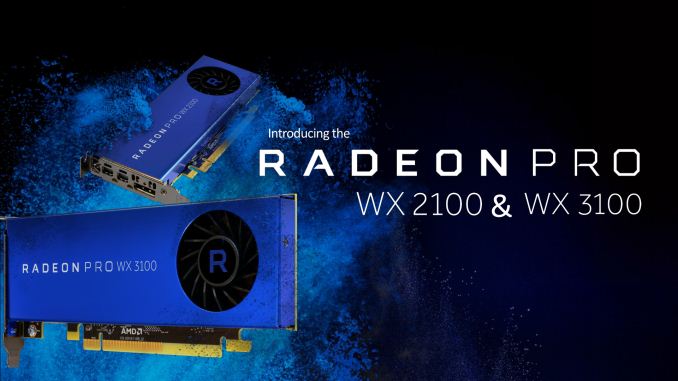
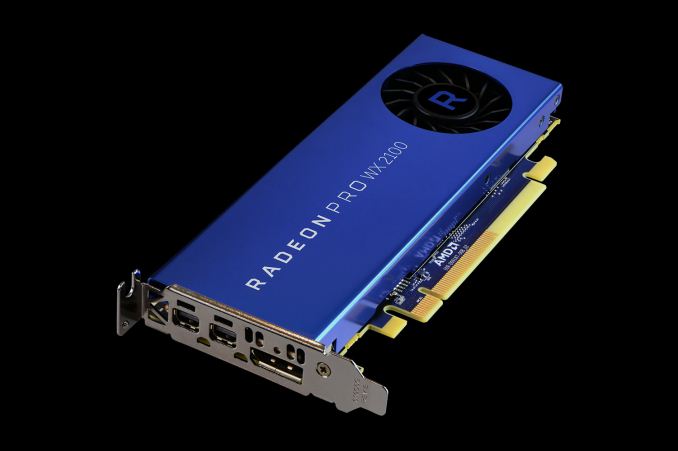

 Quote
Quote
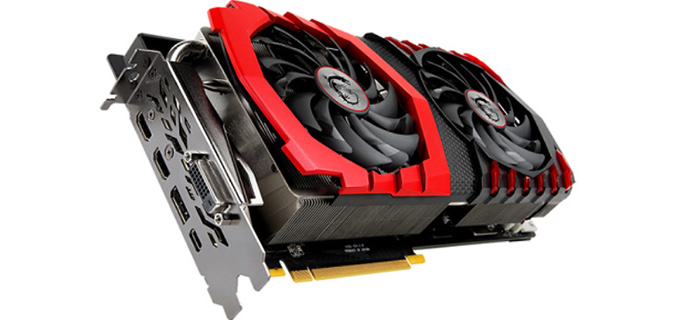


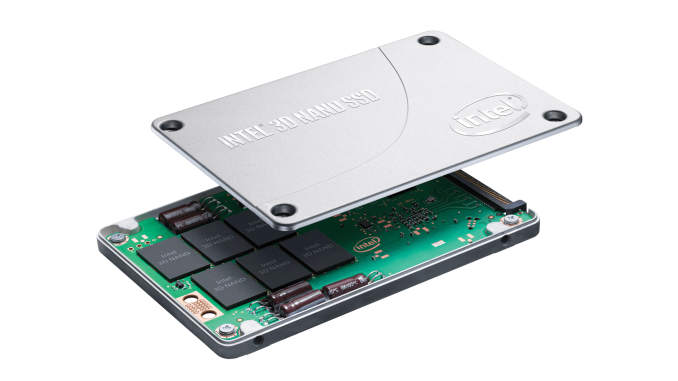

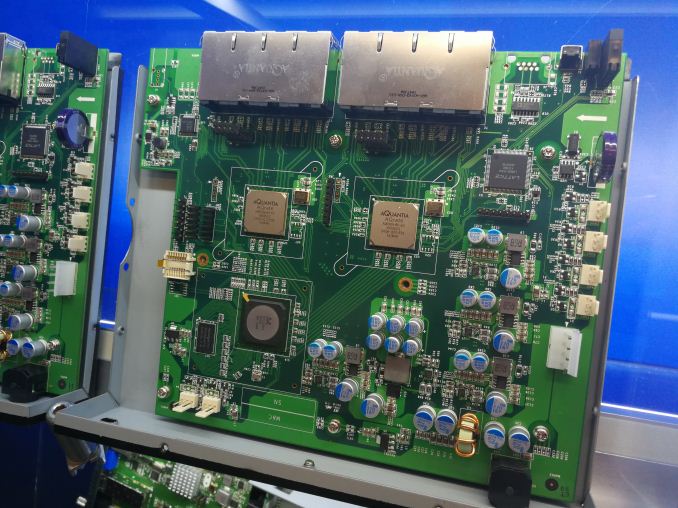



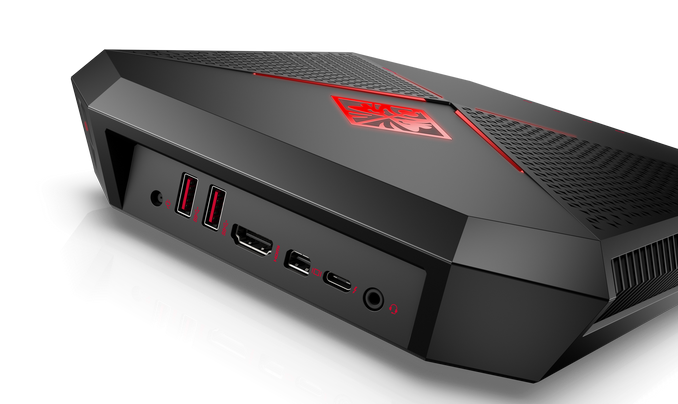





















Bookmarks